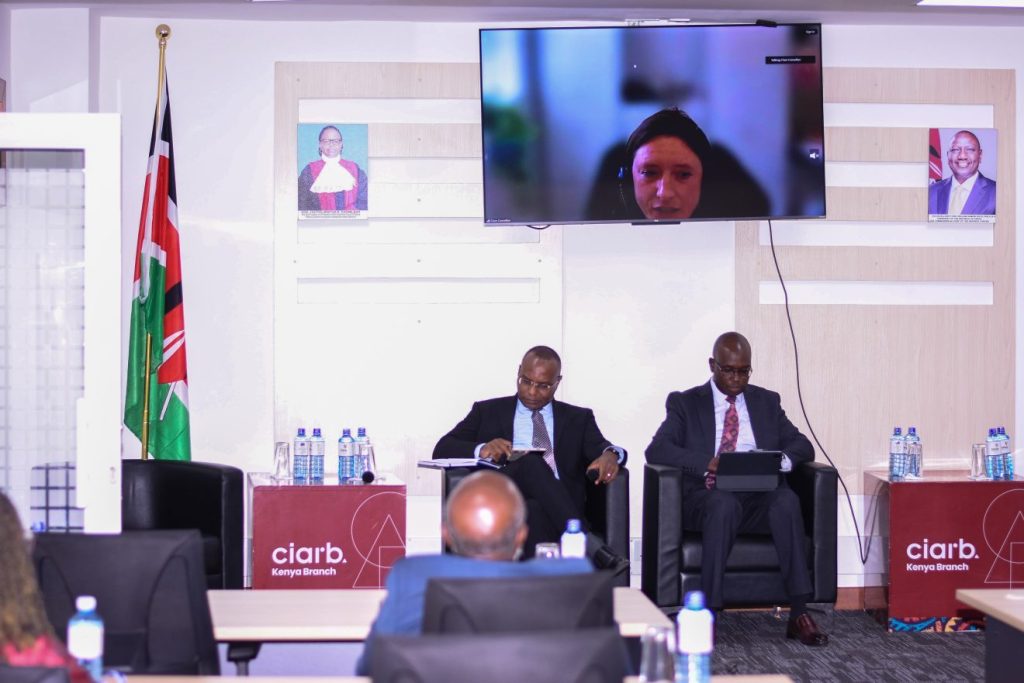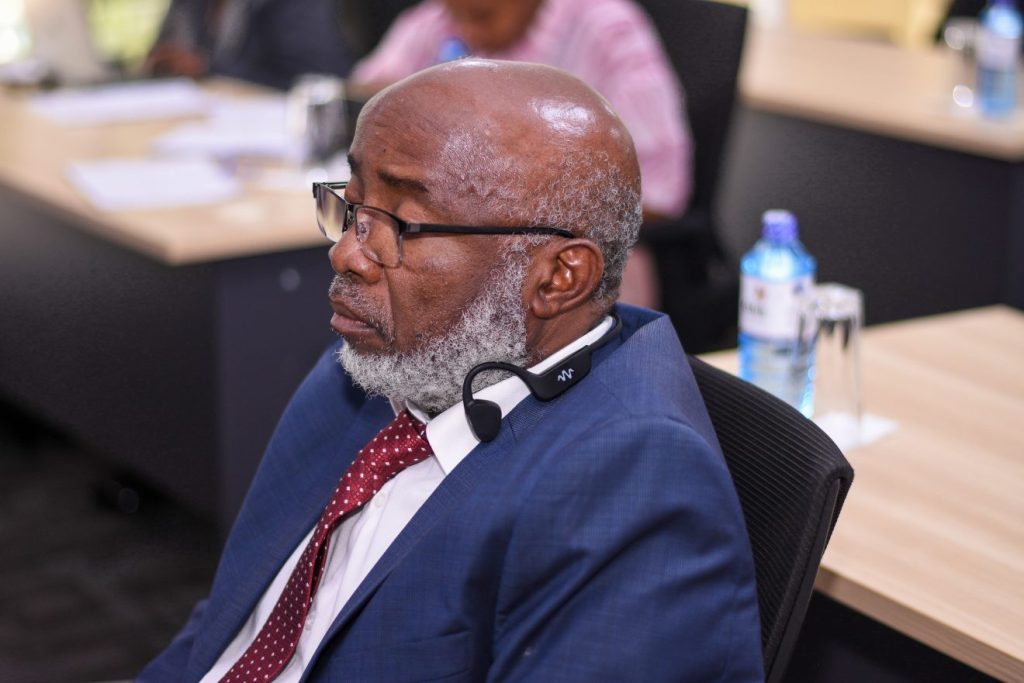Topic: Arbitration as a Tool for Achieving Green Growth Sustainability in Kenya’s Energy & Construction Landscape.
Prof. Wyne began by giving a background on the need to use arbitration to achieve a green future before inviting panelists to give their opening remarks.
Eng. Muchemi introduced arbitration as a welcome alternative to litigation that requires consent from all parties, and is supported by contractual terms between parties, which courts uphold except where parties agree otherwise. He highlighted how the Judiciary of Kenya has prioritized ADR, including mediation and arbitration, noting with approval that all Supreme Court Judges are Fellows of the Chartered Institute of Arbitrators.
On regulatory frameworks, he mentioned that arbitration is governed by the Arbitration Act, which is currently under review, and invited participants to participate through the Institute, which was holding a webinar on the following day.
He compared arbitration to litigation, noting that it is much more efficient and flexible as compared to litigation, making it much quicker in resolving disputes. He added that arbitration affords its participants privacy and the freedom to select an arbitrator of their choosing, especially one with professional knowledge on the matter. In conclusion, he praised arbitration for its capacity to maintain relationships between parties and the enforceability of the arbitral awards, owing to the limited room for appeal in Section 35 of the Arbitration Act.
On green growth and sustainability, he acknowledged the consciousness about sustaining the environment through Environmental Impact Assessments, and the key role of arbitration in speeding up the resolution of construction and energy disputes, which, when delayed, often have a significant environmental impact.
He outlined green growth to be growth focused on environmental impact, with a key focus on efficient use of natural resources, reducing carbon footprint, and eco-friendly technology, with sustainable business models.
Clare Connellan, drawing from her career practice of international arbitration and her leadership role in sustainability, further discussed how green growth, sustainability, arbitration and finance are interconnected by breaking down the term ESG and stressing on the need to employ just practices for all in society.

Clare drew on the history of ESG from soft law, in the form of Corporate Social Responsibility, to concrete legislative requirements in countries such as Australia and Canada, which can also be incorporated in contracts between parties. She further highlighted the role of international organizations such as the World Bank and the European Union (EU) in imposing ESG requirements to ensure that contracts have a positive environmental and social impact.
In answering a question from Prof. Wyne, she confirmed that ESG clauses have made their way into Dispute Resolution Clauses. For guidance on implementation, she referred participants to the CSRD (Corporate Sustainability Reporting Directive) and CSDDD (Corporate Sustainability Due Diligence Directive), which are key EU sustainability regulations and other provisions in FIDIC contracts, optional clauses in the NEC (new Engineering Contract), and the JCT (Joint Contracts Tribunal). As a reminder that ESG is forward-looking, she also referred participants to The Chancery Lane Project (TCLP), which has open-source climate clauses named after children dear to the drafters.
Eng. Daniel Cherono, in response to the moderator’s question, painted a picture of what the energy and construction industries mean to Kenya’s economy. He highlighted that each of them contributes between 5 and 10% of the Gross Domestic Product (GDP). Additionally, he mentioned their importance in creating employment, supporting green building practices, and building sustainable communities through the Sustainable Development Goals (specifically SDGs 6,7,9,11,12 and 13).
Using a case study, he portrayed how defective work in construction and energy projects can potentially become major environmental issues when dispute resolution is stalled in court, and urged participants to engage in arbitration to reduce the time and risks involved. He also encouraged the participants to consider strong and neutral arbitral institutions in their dispute resolution clauses to provide equal chances for all parties involved, boost investor confidence and avoid eventually spending more on dispute resolution than the value of the project in dispute. He continued to make a case for arbitration, citing its confidentiality and the flexibility offered to parties to select their arbitrator of choice, and ended by stating that, at all events, arbitration is more just and humane than the resort to the sword.

Eng. Muchemi agreed with Prof. Wyne on the deficiency of practitioners who understand the practice of arbitration in the construction and energy sectors, and the reduced awareness, which leads most disputing parties to litigation, which can be disastrous for the parties and the environment due to the associated delays. Drawing insights from international organizations that mandate arbitration for the resolution of construction and energy disputes, he held that the best way to address issues is to resolve them as the project continues, for all users to reap the benefits.
The solution of arbitration, he continued, is suited for both Small and Medium Enterprises (SMEs) because the alternative of litigation is often unfavourable for all parties involved. Owing to the costs and time lost through litigation, he also championed the use of Dispute Adjudication Boards (DABs) in locally funded projects and urged persons in positions of influence in government, the private investment sector, and other developmental partners to encourage their adoption.
Clare, while drawing from the Queen Mary University of London School of Arbitration Survey, done in collaboration with White and Case, stated that the responses gathered from across the globe point to similar issues, especially that of enforceability in arbitration. She added that the interpretation of clauses in environmental disputes can be problematic, and stressed the necessity to avoid broad language, to ensure it is clear where material breach occurs. Emphasizing that prevention is better than cure, she highlighted the need for clear and precise drafting, alignment with local and international best practices, and an understanding of the contract from the outset.
Clare also mentioned that some issues may not be arbitrable and would need expert determination, while others give rise to criminal liability or mandatory jurisdiction. In conclusion, speaking about third-party conduct, she called for standardized metrics in ESG audits.

Eng. Daniel Cherono encouraged synergy and public-private collaboration in arbitration, acknowledging that the public sector is the biggest consumer of ADR. He encouraged all stakeholders to incorporate ESG in their dealings for easier compliance with global partners and stakeholders. In conclusion, all panelists agreed that ESG should be treated not just as a checkbox, but a commitment to a more sustainable world.